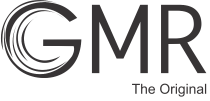S.M.Z. Di Mauro, L.R. Furlan, M.I.T. Ferro, M. Macari, J.A. Ferro
Published: December 10, 2002
Genet. Mol. Res. 1 (4) : 327-336
Cite this Article:
S.M.Z. Di Mauro, L.R. Furlan, M.I.T. Ferro, M. Macari, J.A. Ferro (2002). Growth hormone mRNA expression in the pituitary of Bos indicus and Bos taurus x Bos indicus crossbred young bulls treated with recombinant bovine somatotropin. Genet. Mol. Res. 1(4): 327-336.
About the Authors
S.M.Z. Di Mauro, L.R. Furlan, M.I.T. Ferro, M. Macari, J.A. Ferro
Corresponding Author
S.M.Z. Di Mauro
Email: zingara@fcav.unesp.br
ABSTRACT
The effects of breed and of recombinant bovine somatotropin (rbST) treatment on growth hormone gene expression were studied in young bulls. The experiment was completely randomized in a [2 x 2]-factorial arrangement, using two levels of rbST (0 or 250 mg/animal/14 days), and two breed groups (Nelore and Simmental x Nelore crossbred). A cDNA encoding Bos indicus growth hormone was cloned and sequenced for use as a probe in Northern and dot blot analyses. Compared to the Bos taurus structural gene, the Bos indicus cDNA was found to begin 21 bases downstream from the transcription initiation site and had only two discrepancies (C to T at position 144-His and T to C at position 354-Phe), without changes in the polypeptide sequence. However, two amino acid substitutions were found for Bubalus spp., which belong to the same tribe. The rbST treatment did not change any of the characteristics evaluated (body and pituitary gland weights, growth hormone mRNA expression level). Crossbred animals had significantly higher body weight and heavier pituitaries than Nelore cattle. Pituitary weight was proportional to body weight in both breed groups. Growth hormone mRNA expression in the pituitary was similar (P>0.075) for both breed and hormonal treatment groups, but was 31.9% higher in the pure Nelore group, suggesting that growth hormone gene transcription regulation differs among these breeds.
Key words: Recombinant bovine somatotropin, Bovine pituitary Growth hormone gene expression, Bos indicus, Bos taurus.
